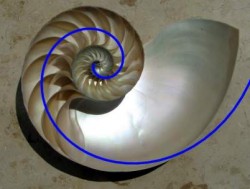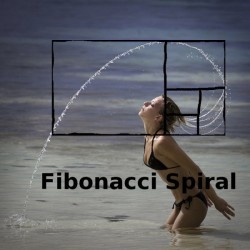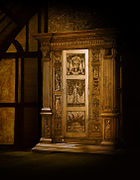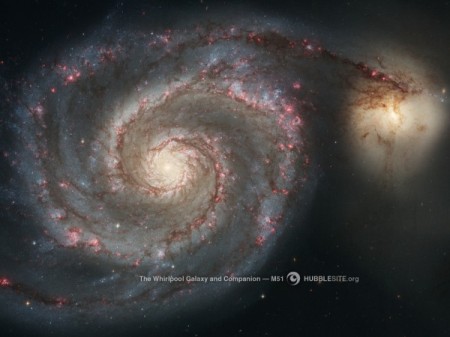Zero because we have no clue so far.
One because one has to start somewhere.
One because zero plus one equals one … and we have a series.
The list of numbers as they add up from zero and one.
Two because one plus one.
Three because of one plus one again . . . sorry but in all truth, it’s just how our cavemen ancestors counted : 1= conscious self, 2=duality : prey, enemy or mate and 3= byproduct : meal, death, kids.
So here it goes : 0, 1, ( 0+1=) 1, ( 1+1=) 2, ( 1+2=) 3, ( 2+3=) 5, ( 3+5=) 8 so five plus eight is thirteen plus eight twenty-one then thirty-four and so on.
0 1 1 2 3 5 8 13 21 34 55 89 144 233 377 610 and so on goes the Fibonacci series.
What is the Fibonacci series and why am I talking about it? I was checking out recent Hubble pics of the Whirlpool Galaxy :
and remembered wanting to initiate more Science posts, maths in particular. So I looked at the magnificent spiral arms of M51a so labelled because discovered by the French astronomer Charles Messier ( to whom we owe the original deep sky catalog called since Messier objects ) on the , yes, you guessed it 13th of October 1773. And that galaxy’s spiral arms reminded me of the Fibonacci series.
The Fibonacci numbers were “re-discovered” by the Italian sholar in 1202 in his Liber Abaci although known from earlier mentions in Indian mathematics. It is one of the “magical” sets of numbers in math. And as language allows an exchange of descriptive qualitative concepts of the world between humans, mathematics do in quantitative manner. And mathemagic, this series really is. The integers or the Primes are not as awe-inducing at first. Fibonacci works wonders that can be seen, experienced even. He himself transposed his series in the idealized rabbit field starting with one pair ending with 144 pairs, 😆 Bunnies growing to the series’ rhythm and likewise, the galaxy’s spiral arms, let me show you. In this image, you start somewhere ( zero ) draw a one meter or foot, inch, whatever  square and then a second on one side and then a two unit square besides those and a three unit one next and five unit square and so on, the biggest square on the left being the ninth one and 34 units squared to be followed below our spiral image by a 55 units per side square. That numeric sequence is what you see activated in the galaxy’s arms. It is everywhere around.
square and then a second on one side and then a two unit square besides those and a three unit one next and five unit square and so on, the biggest square on the left being the ninth one and 34 units squared to be followed below our spiral image by a 55 units per side square. That numeric sequence is what you see activated in the galaxy’s arms. It is everywhere around.

 These are all expressions of a mathematical relationship etched in the Universe.
These are all expressions of a mathematical relationship etched in the Universe.

* There is a more scientific aspect to the series.
It ties to the perfect proportions of the Golden Number. It mirrors the Lucas numbers as a pair of complementary Lucas sequences. It takes up the shallow diagonal of the Pascal Triangle.
Highly suited to combinatorial maths, Fibonacci numbers are employed in computer science a lot and in Internet security in particular : random generators, list sorting devices and networking for parallel computing.
As it converges to the Golden ratio of 1,618 033 and that is close enough to the conversion factor between miles and kilometers 1,609 344, you can easily jump from one Fibonacci numbers in kilometers to find the miles in the one below or up from one as miles to next as kilometers. They are also used in music and a complete sequence so any positive integer can be derived from its elements without reusing one.
They also appear in tree branching arrangements and thus can be seen as part of fractals and cristallization.
Here is one set of numbers that spans the whole spectrum of indentations into our universal substrate!
Here’s the Fibonacci series. Mathemagical!
Good afternoon all, Tay.
For additional information :



Hello and thanks, Christian and Mike. Hoping for comments soon, g’day, Tay.
Hey, SkinnyW! Thnx for the like and for that pic of yours : http://suellewellyn2011.wordpress.com/2012/10/06/weekly-photo-challenge-happy-and-travel-theme-animals-kingfisher-borneo-malaysia/ Good night ma’am, Tay.
Eh, Denny! Glad to have you around, Tay.
Thnx Yuri, magical 50 there! 😀 Tay
And hi and thnx again, Robert. 😉
Hello Shy Dragon! Thank you and welcome, Tay.